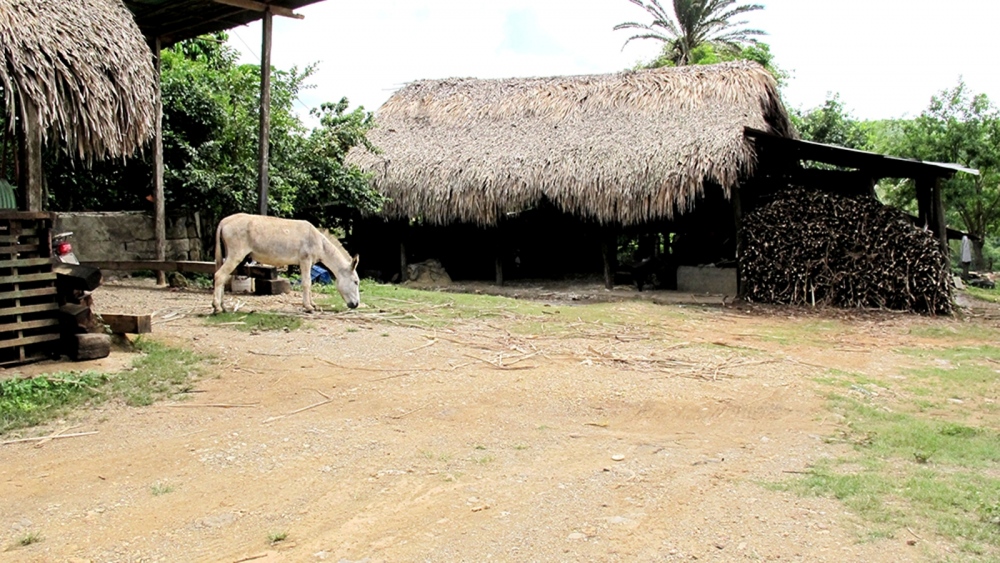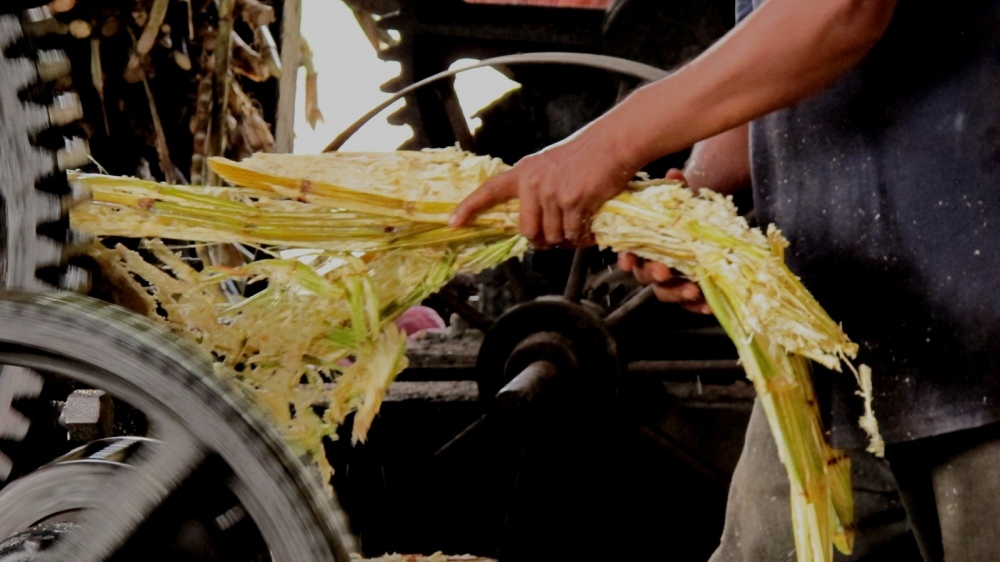PAPELON
IRENE TURNER GONZÃLEZ, Documental Photographer
____________________________________________________
Documental photographic study of centuries-old production of "papelon" brown sugar in state of Sucre, Rio Casanay, Venezuela.
_________________________________________________
I have done several documental photographic projects in the eastern portion of my native country, Venezuela, and was in the area when the new project I had in mind was indefinitely postponed, as is often the case both in Venezuelan and everywhere else for documental photographers. Sitting around with friends that very night, someone suggested that a documental photographer should record the process of making "papelon" before it is completely replaced by modern production. Others swore that it could never be replaced, but nevertheless I wanted to see if this traditional production was as interesting as it sounded.
Papelon is a form of brown sugar, unrefined and heavy in its sweetness. Papelon has been made for centuries in Venezuela and its production still follows the traditional system of the first papelon mills of hundreds of years ago. This is not because the workers are following tradition; it is because this is how to make papelon.
The next day, accompanied by a couple of friends from the area, I set out for the small town of Rio Casanay, some 3 1/2 hours by rural roads, where it was said that several families had small mills that still made the best papelon. Mid-way through the trip it was mentioned that the mills do not operate every day, so we could not be sure if we would find any mills operating, and so it seemed when we arrived. We quickly found three mills, all shut down.
When we asked, everyone looked up in the sky and said, "Yes, there's one." The mill I visited is located high on a hill near Rio Casanay, itself a rural town in the eastern state of Sucre. It does not operate every day, maybe once or twice a week, and rarely on the same day. When they do operate they light up the large chimney whose smoke announces to the town and farms around that today there will be papelon. Everyone is alert to buy some.
The road leading up to the mill is rocky and narrow, the cars are old and most people come on foot. No one complains, for the trip is worth it.
At first the people at the mill did not want to receive us. They sent us back down the hill to the house of the owner, who finally - suspicious and reluctant - gave his consent. And so, tired and hungry, we went back up the hill, exhausted before even beginning. Surprise! The workers were wonderfully cordial. It was their lunch time, and seeing that we were hungry, offered to share their lunch with us! And yes, they were communicative and happily disposed toward our project.
The old mill with its thatched roof still looks in pretty good shape. The floor is dirt, but it is hard from so much time and walking. Some of the passageways of the floor are bowled, like trenches; these are the areas where the hard carrying has been done, such as the floorway leading to the fire.
This mill was started in 1812. The age was evident from the floor itself. I always work in tightly tied tennis shoes because of irregularities in pavements and floors, but I had never been on a dirt floor like this. The floor was a highly compressed dirt and through the passage of years had sunken in the middle, so it was like walking in a canoe. The central path led up to two huge calderas bellowing out smoke from a full load of sugar cane. I was embarrassed to think of fairy tales of witches' brew.
Once I gained my bearings and was able to stand with reasonable stability, the discomfort of the place was quickly forgotten. As I photographed the process I could not stop thinking of the many generations of men who worked in this small rural mill for over 200 years, doing the same tasks in almost the exact same way as the workers were doing this very day.
The procedure for making papelon is not complex, but there are certain essentials. Most important is sugar cane. A lot is used and none is wasted. The cane is run through the mill to extract the sugary juice. The leftover cane is dried and used as fuel to cook the papelon.
The large oven is also essential. You would be surprised how much heat the burning cane can produce. Stoking the fire is a hard job, but it must be done with some degree of delicacy to maintain an even heat.
Above the fire is a large platform made of cement. In the cement there are several large holes. Calderas fit into these holes and are place there for the sugar juice to be cooked. There is no thermometer, so they have to coordinate closely the heat, the cane fuel, the distribution of the fire and the boiling sugar juice.
Above the calderas the work is still manual. The juice is stirred with a type of large slotted wooden spoon, larger than a shovel, as the concoction gets thicker and thicker. The man who does this strenuous work is a kind of specialist. He not only stirs, he tosses each spoonful of liquid in the air to get the right consistency.
The others wait for him to signal that the liquid is ready. Then they pour it out of the calderas into a trench in a large tree trunk, where they continue to stir it with wooden spoons. The work must be rapid because the liquid is viscous and they have to worry about it hardening before they can pour it into the cooper molds that have the conical form of the finished papelon.
The workers soon seemed to forget me. Each one was immersed in his work without even looking to his side, much less at me. Then suddenly one of the saw me gazing at the papelon and gave me a small chunk: manna from the heavens!
In Venezuela we are so used to papelon that we forget how long the tradition has lasted. The most modern addition is the press itself where the juice is squeezed out of the sugar cane, and that press is about 100 years old, bought when electricity was new to the area. Before that, the milling was done by hand. The rest of the process is still pretty much the same.


































